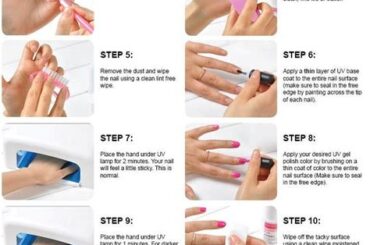Choose the Right Nail Type for Your Woodworking Project
Nail types have changed over the years but there are few names that will never go out of style. Acrylic, lace, wood and pullout all come and go but the popular styles stand the test of time. The first thing to know when choosing a new style is what is commonly known as a barb nail. Named for the Italian pastry chef who invented them in the 1970s, these long, slender nails are not only pretty but also give a woman the look of long, beautiful fingers.
Thin, straight and wavy are the thinning categories of nails that fall into the pullout category. These types can be used to cover the entire length of the nail or just on the tip. Nail types that fall into this category are great for finger nail designs or creating a ring nail. Thinning, straight and wavy nails look best on all types of skin and the finger looks its best with a ring nail.
Nail types and their importance
Nail types can be made from a variety of materials. Nail trim, glue, resin and fastener nails all fall into this category. Trim nails are cut into strips and glued together at the base. This is done to form rings, donuts, V-shapes, princesses or other shapes. Using a nail trim that is cut too short can result in difficulty applying adhesive and fastening nails.
Some of the different types of woodworking nails include mortise and tenon, glue and tack, eyelet and stop, crossheads and claw. Mortise and tenon is a very common type of woodworking nail that is used to create small holes and patterns into furniture, woodwork and fabric. To apply these nails, all you need is a set of nail clippers and a file with stiff bristles. To make the holes, the wood worker must start by drilling straight into a board or other material. The clippers cut strips of wood in different sizes and the nail is placed into each hole.
Another type of nail types is the flat head nail. Flat heads resemble the shape of a baseball and are commonly used for stripping wood and metal. The materials that flat head nails can be used on include drywall, metal and wood. Some of the more common flat head nails are claw-nail, eyelet-nail and crosshead nails.
Spiral shank nails are used in masonry and concrete. These nails are shaped like a spiral and have a very long hair. Nails of this kind are also called wood shanks. They are typically used in masonry projects where there is a need to hold a piece of wood up in position by using braced wall boards. Another type of woodworking nail is the woodshanked masonry nail, which is similar to a spiral shank nail but has a straight hair. Wood shanked nails can be used for exterior masonry applications such as walls and door frames.
Framing nails are the most common nails used in woodworking projects. These are used to attach two pieces of wood together. Framing nails are usually made of steel and are similar to other woodworking framing nails. The most common styles of framing nails are Canadian, double, and half, straight and nail.
When it comes to woodworking projects, you need to nail things the right way. Nail length should match the wood grain. Nail width should also match the wood grain. Nail lengths should not be too long because then they will become difficult to remove later on. Nail shapes such as round, square, and triangular are good for various applications. For gluing purposes, the right nail length and nail shape will ensure that the project is well glued and will last for a long time.





